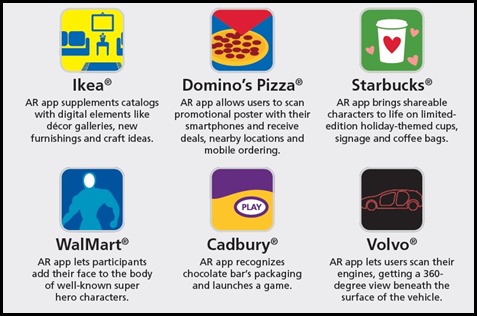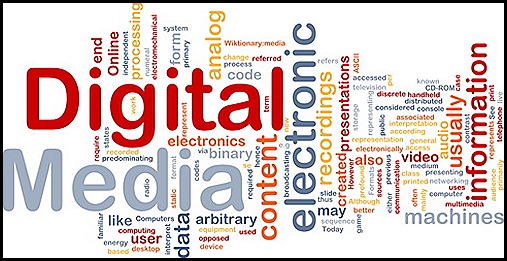 What is Augmented Reality? Augmented Reality is a digital technology that covers images or video over physical objects. AR provides all types of information such as location, visual, audio, heading, and acceleration data, and opens a way for real-time feedback. Augmented Reality bridges the gap between physical or traditional means of advertising and digital experience, in turn empowering brands to engage with their customers and get greater business results in the process. With the active convergence of mobile, social and context, augmented reality can turn out be a great app for sure.
What is Augmented Reality? Augmented Reality is a digital technology that covers images or video over physical objects. AR provides all types of information such as location, visual, audio, heading, and acceleration data, and opens a way for real-time feedback. Augmented Reality bridges the gap between physical or traditional means of advertising and digital experience, in turn empowering brands to engage with their customers and get greater business results in the process. With the active convergence of mobile, social and context, augmented reality can turn out be a great app for sure.
AR lets one use their smartphone or tablet’s camera to see the digital information on top of a physical environment. Hence, it offers digital enhancements to the real world senses of touch, sound, sight, smell and taste. Now let‘s see how augmented reality can be used by businesses. Most brands and businesses can use it for:
- · Product demos/manuals
- · Multiple product views
- · Deals or offers
- · Interactive social media
- · Real-time information
- · Sneak peek beneath the surface
- · Pitches & Tenders
- · Online campaigns
- · Events & Conferences
- · Point of Sale
- · Tourism & Leisure
- You must be wondering that how this augmented reality works? What is found by a basic research is that when compared to traditional marketing, AR marketing works much better. This is because when people touch or interact with a product or a device, they establish an emotional bond with it which makes them more likely to buy it.
AR leads you from a printed advertisement to an offer, from a booth in an exhibition to a Facebook contest, from a retail shop window to a digital market.
How AR works
- · App and smartphone camera sensors combine reality with virtual overlays
- · Readers or viewers hold phones in front of a printed area, surface or page
- · The AR app searches for images and patterns on a server
- · The App validates image and sends back the associated content
Major sectors using AR
- · Retail
- · E-commerce
- · Real Estate
- · Industrial Sector
- · Education and Training
- · Print and publishing
- · Location based services
Few brands using AR
Benefits of using Augmented Reality
- · Greater interactivity
- · Real-time information
- · Trackability
- · The augmented time of the consumer with the service or the product presented for a prolonged period of time
- · The relationship built through this engagement is long lasting
- · The efficiency to spread to masses through the digital space
- · The ability to build a series of actions, updates and campaigns through various applications
Augmented Reality Statistics:
• The total revenue generated from AR was around $300 million in 2013.
• In 2014, around 30% mobile subscribers will use AR at least once in a week.
• In 2014, more than 864 million smartphones will have AR technology enabled.
• By 2016, AR revenue is expected to cross $600 billion.
• It is expected that by 2017 more than 2.5 billion mobile AR apps will to be downloaded
Source: Trigg-AR.com
Revenue generation through AR seems to be on a positive rise and is being successfully tried by brands. AR till now has evolved to a great extent and continues to account for infinite downloads. If brands can provide an experience to customers in a variety of locations, it is evident that consumer engagement will increase too. Hence, in this age of digital era and programmatic advertising, Augmented Reality is expected to be very attractive. What do you think? Do share your thoughts in the comments below!






